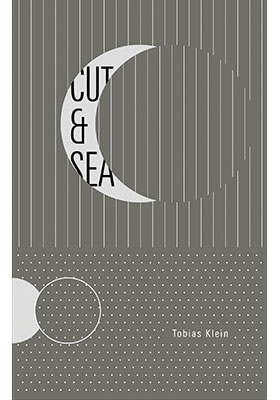Cut & Sea 揭視點
ISBN : 978-988-19025-4-2
Distributed for HKU Museum and Art Gallery 香港大學美術博物館
October 2018
128 pages, 4.125″ x 6.5″, 20 color illus.
- HK$125.00
Also Available on
Cut & Sea documents an exhibition by architect and artist Tobias Klein on the grounds of Oi!—the Oil Street Art Space in Hong Kong. Created for the Back to Basics series during the Hong Kong Biennale in Architecture, the series explores the interrelationship between art and the nature of its existence in everyday life. The title of Klein’s work refers to the ocean waves that used to reach Oi!—back when it operated as the Royal Hong Kong Yacht Club—and to two 2.5-metre discs which Klein designed to be cut into a construction wall and into the lawn of the art centre. Both discs can be slid open on rails to reveal the construction site of a skyscraper, or the layers of soil compacted beneath Oi! The two lines (horizontal and vertical) become activators, allowing a reflection onto the relationship between oneself and one’s expectation of human relationships. Cut & Sea transforms the visitor into an actor, unlocking new optical, physical and spatial relationships. This volume includes project designs, theoretical texts concerning the project’s development and interviews with the architect and contractor who carried out the work.
《揭視點》記錄了一個由建築師與藝術家Tobias Klein於香港油街實現的土地上所策劃的展覽。是次展覽乃配合香港建築雙年展《還原基本》系列而創作,以發掘藝術在尋常生活中的形相及力量。Klein的作品題目既呼應了昔日拍打着油街實現的前身──皇家香港遊艇會會所的海浪,亦指涉兩個直徑2. 5米、由Klein設計用來切割油街實現的建築牆壁和草坪的鋼板。兩塊安置在軌道上的鋼板皆可拉開,讓人一瞥一座大廈的建築工地、或油街實現地底下層層緊密的土壤。這兩條線(橫向與垂直)成為催化劑,使人反思自我與對人際關係之期望的關係。《揭視點》將訪客轉化為演出者,釋放新的光學、物理和空間關係。本書囊括與此項目發展相關的項目設計和理論,並與執行是次計劃的建築師和建造商進行的訪談內容。
“A crucial role in this work centers on the discoveries when opening the discs. Looking through the vertical opening into the neighboring construction site the observer becomes an observer of the workers’ activities. These are everyday routines that can be observed. The repetitive activities are so commonplace that little progress is registered. Only over a period of time is progress made in the development of the building visible as a form of change that has taken place. By offering the viewer a type of microscopic excerpt from a repetitive daily process, Tobias Klein has created a prerequisite for understanding everyday activity as a continuum of change.” —Harald Kraemer


